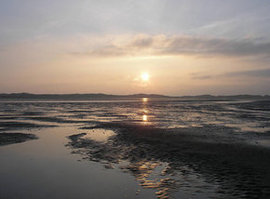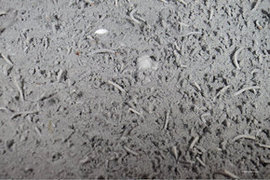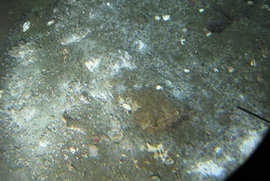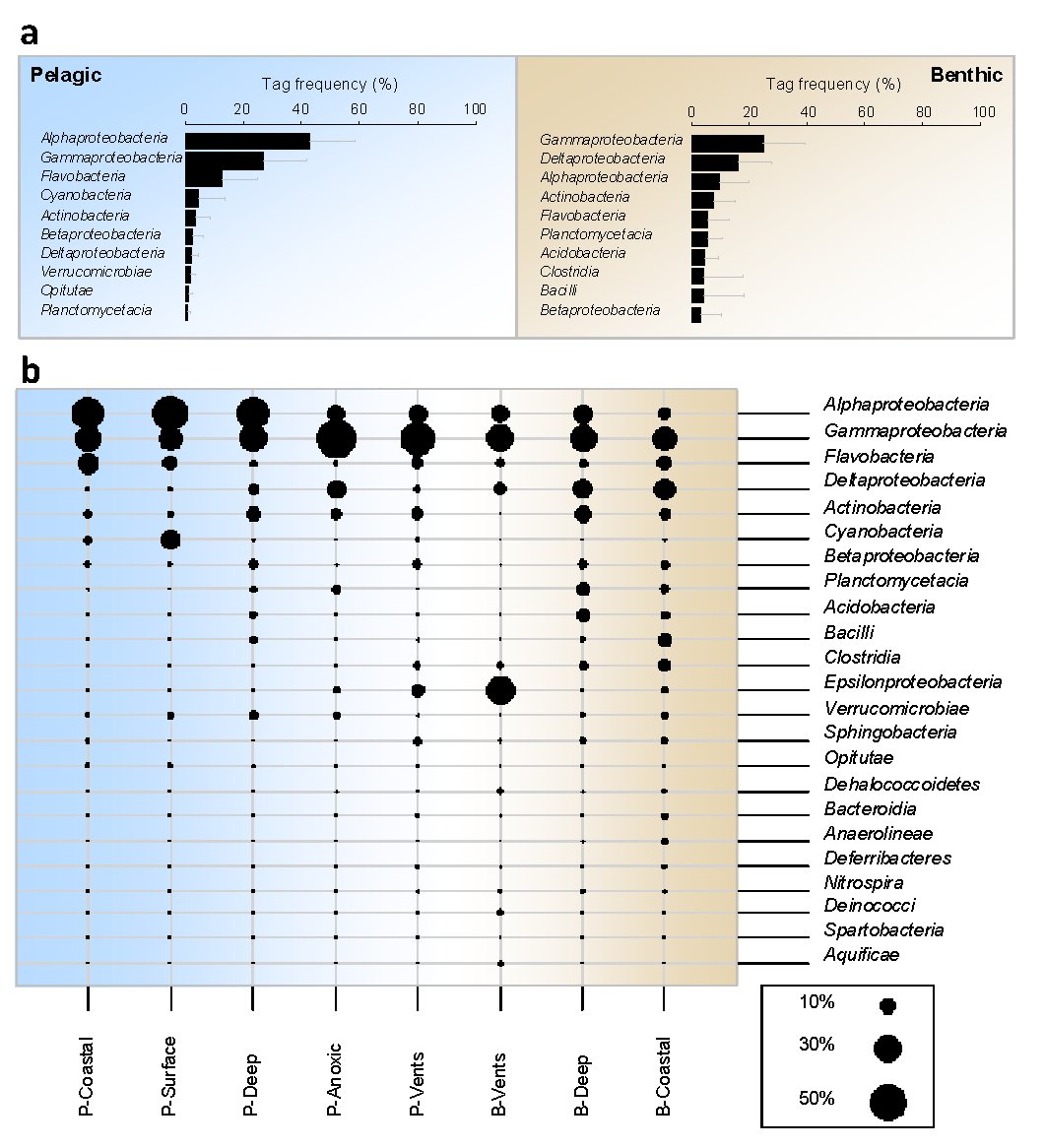Page path:
- Press Office
- Press releases 2011
- 29.09.2011 Microbial Diversity in the Oceans
29.09.2011 Microbial Diversity in the Oceans
Marine microbes have essentially contributed to global biomass, nutrient cycling and biodiversity since the early history of the Earth. The oceans provide a variety of distinct biotopes for microorganisms: sunlit surface water and dark deep water, nutrient-rich coastal water and nutrient-poor „ocean deserts“, and the sea floor which also offers many habitats for microorganisms. Considering this variety of habitats, the composition of marine microbial communities may be expected to vary in the different ecosystems. Yet, there has been so far very few information on the distribution of microbes in and across different ecosystems.
Marine Ecosystems are very diverse. Clockwise starting at the upper left: Arctic surface water off Spitsbergen (Image A. Boetius), Sediment of the Wadden Sea of Schleswig-Holstein, Germany (Image A. Gobet), Life on the deep sea bottom of the Guaymas Basin at 2000 m depth, Baja California, Mexico (Image A. Ramette, Alvin cruise AT 15-40, 2008, camera onboard Alvin), Black Sea sediment with worm tubes at 100 m depth (Image A. Boetius, ROV Quest, MARUM MSM13-3).
Lucie Zinger, Antje Boetius, Alban Ramette of the Max Planck Institute for Marine Microbiology and their colleagues from several American institutes examined the bacterial diversity in more than 500 globally distributed samples. Among them were samples from the water column (pelagic realm) and from the sediments (benthic realm) of the ocean. The samples originated both from coastal waters and from the deep sea , from oxygen depleted waters and sediments, and from hydrothermal vents. The scientists extracted the total DNA from the samples and sequenced a highly variable region of the bacterial ribosomal RNA gene, the V6 region, by high-throughput sequencing. After clustering the sequences into more than 120,000 OTUs (operational taxonomic units) they performed multivariate analyses to disentangle the respective contribution of environmental, spacial and primary productivity factors on microbial community changes.

Global map of sample locations. The pelagic samples are marked with circles, the benthic samples with triangles. The different ecosystems are indicated by colors: orange for coastal, light blue for open ocean surface waters, dark blue for deep sea, red for anoxic, and purple for hydrothermal vents.
„The pelagic and benthic communities strongly differ on all taxonomic levels“ says Lucie Zinger, „with less than 10 % of the bacterial types occurring in both ecosystems.“ Alban Ramette explains this observation as follows: „ The various realms may offer habitats with very different conditions which would impose strong selective pressure on microbial communities. The authors also reported that deterministic factors of community change were identified to be productivity (i.e. the formation of biomass) and geographic locations. In addition, the heterogeneity and dynamic nature of coastal and vent habitats explains the the high community variability of these ecosystems.“
The composition of the microbial community differs in the pelagic and in the benthic realms. Upper panel: The average frequency at which the 10 most abundant bacterial classes occur in both realms. Lower panel: Average proportions of the main bacterial taxa in the respective realms and ecosystems. P=pelagic, B=benthic.
The results of the study do not only illustrate how different the pelagic and benthic realms are; they also reveal patterns on how they are connected. Indeed, the distribution of the bacterial community in the water and in the underlying ocean bottom may correlate with the biomass production in the surface ocean water. This shows that the pelagic realm is coupled to the benthic realm by the sinking of particles. Another interesting result was that identical, but remote pelagic habitats harbor similar communities, whereas the benthic community composition was considerably more spatially structured and heterogeneous. The scientists explain this phenomenon with the probable limited physical mixing at the seafloor as compared to the seawater.
Lucie Zinger and her colleagues have performed the first large-scale analysis on the composition of the microbial communities of the world’s oceans based on a consistent set of methods and encountered remarkable distribution patterns. „ Our results open interesting perspectives for the definition of marine ecosystems“ concluded the researchers and added „ the analysis of the biogeography of microbes has shown that we have to reconsider our hypotheses on the distribution of bacteria, and many new exciting findings will keep us busy fort he coming years.“
Rita Dunker
For further information, please contact
Dr. Lucie Zinger [Bitte aktivieren Sie Javascript]
Dr. Alban Ramette 0421 2028 863 [Bitte aktivieren Sie Javascript]
Prof. Dr. Antje Boetius 0421 2028 860 [Bitte aktivieren Sie Javascript]
or the public relations office
Dr. Rita Dunker 0421 2028 856 [Bitte aktivieren Sie Javascript]
Dr. Manfred Schlösser 0421 2028 704 [Bitte aktivieren Sie Javascript]
Original publication
Global patterns of bacterial beta-diversity in seafloor and seawater ecosystems. L. Zinger, L. A. Amaral-Zettler, J. A. Fuhrman, M. C. Horner-Devine, S. M. Huse, D. B. Mark Welch, J. B. H. Martiny, M. Sogin, A. Boetius, and A. Ramette. PLOS one 6(9), 2011.
http://www.plosone.org/article/info%3Adoi%2F10.1371%2Fjournal.pone.0024570
DOI: 10.1371/journal.pone.0024570
Involved institutions
Max Planck Institute for Marine Microbiology, Bremen, Germany
Josephine Bay Paul Center, Marine Biological Laboratory, Woods Hole, Massachusetts, USA
Department of Biological Sciences, University of Southern California, USA
School of Aquatic and Fisheries Sciences, University of Washington, Seattle, USA
Department of Ecology and Evolutionary Biology, University of California, Irvine, California, USA
HGF MPG Joint Research Group on Deep Sea Ecology and Technology, Alfred Wegener Institute for Polar and Marine Research, Bremerhaven, Germany
Lucie Zinger and her colleagues have performed the first large-scale analysis on the composition of the microbial communities of the world’s oceans based on a consistent set of methods and encountered remarkable distribution patterns. „ Our results open interesting perspectives for the definition of marine ecosystems“ concluded the researchers and added „ the analysis of the biogeography of microbes has shown that we have to reconsider our hypotheses on the distribution of bacteria, and many new exciting findings will keep us busy fort he coming years.“
Rita Dunker
For further information, please contact
Dr. Lucie Zinger [Bitte aktivieren Sie Javascript]
Dr. Alban Ramette 0421 2028 863 [Bitte aktivieren Sie Javascript]
Prof. Dr. Antje Boetius 0421 2028 860 [Bitte aktivieren Sie Javascript]
or the public relations office
Dr. Rita Dunker 0421 2028 856 [Bitte aktivieren Sie Javascript]
Dr. Manfred Schlösser 0421 2028 704 [Bitte aktivieren Sie Javascript]
Original publication
Global patterns of bacterial beta-diversity in seafloor and seawater ecosystems. L. Zinger, L. A. Amaral-Zettler, J. A. Fuhrman, M. C. Horner-Devine, S. M. Huse, D. B. Mark Welch, J. B. H. Martiny, M. Sogin, A. Boetius, and A. Ramette. PLOS one 6(9), 2011.
http://www.plosone.org/article/info%3Adoi%2F10.1371%2Fjournal.pone.0024570
DOI: 10.1371/journal.pone.0024570
Involved institutions
Max Planck Institute for Marine Microbiology, Bremen, Germany
Josephine Bay Paul Center, Marine Biological Laboratory, Woods Hole, Massachusetts, USA
Department of Biological Sciences, University of Southern California, USA
School of Aquatic and Fisheries Sciences, University of Washington, Seattle, USA
Department of Ecology and Evolutionary Biology, University of California, Irvine, California, USA
HGF MPG Joint Research Group on Deep Sea Ecology and Technology, Alfred Wegener Institute for Polar and Marine Research, Bremerhaven, Germany





